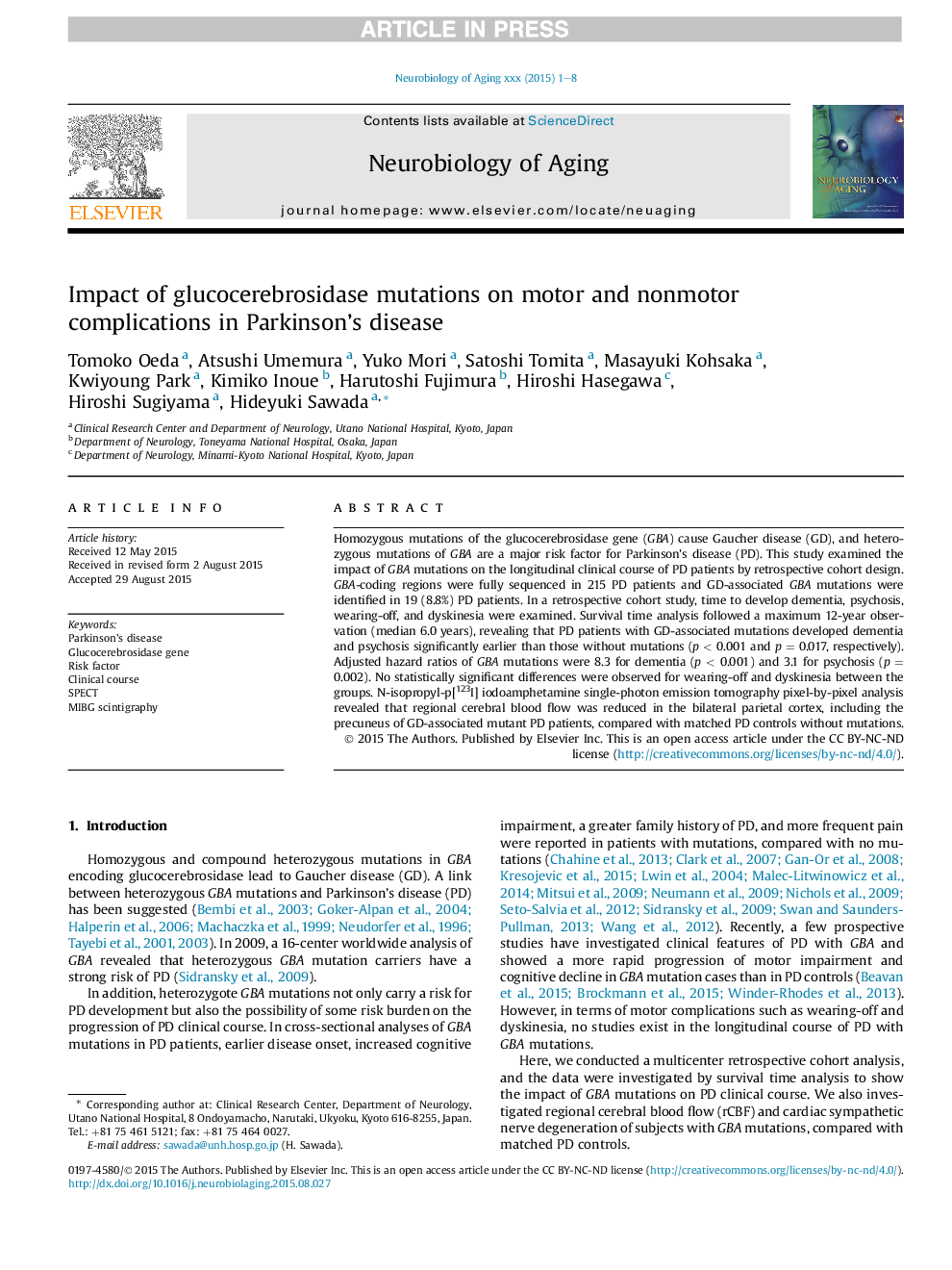| Article ID | Journal | Published Year | Pages | File Type |
|---|---|---|---|---|
| 6803784 | Neurobiology of Aging | 2015 | 8 Pages |
Abstract
Homozygous mutations of the glucocerebrosidase gene (GBA) cause Gaucher disease (GD), and heterozygous mutations of GBA are a major risk factor for Parkinson's disease (PD). This study examined the impact of GBA mutations on the longitudinal clinical course of PD patients by retrospective cohort design. GBA-coding regions were fully sequenced in 215 PD patients and GD-associated GBA mutations were identified in 19 (8.8%) PD patients. In a retrospective cohort study, time to develop dementia, psychosis, wearing-off, and dyskinesia were examined. Survival time analysis followed a maximum 12-year observation (median 6.0 years), revealing that PD patients with GD-associated mutations developed dementia and psychosis significantly earlier than those without mutations (p < 0.001 and p = 0.017, respectively). Adjusted hazard ratios of GBA mutations were 8.3 for dementia (p < 0.001) and 3.1 for psychosis (p = 0.002). No statistically significant differences were observed for wearing-off and dyskinesia between the groups. N-isopropyl-p[123I] iodoamphetamine single-photon emission tomography pixel-by-pixel analysis revealed that regional cerebral blood flow was reduced in the bilateral parietal cortex, including the precuneus of GD-associated mutant PD patients, compared with matched PD controls without mutations.
Related Topics
Life Sciences
Biochemistry, Genetics and Molecular Biology
Ageing
Authors
Tomoko Oeda, Atsushi Umemura, Yuko Mori, Satoshi Tomita, Masayuki Kohsaka, Kwiyoung Park, Kimiko Inoue, Harutoshi Fujimura, Hiroshi Hasegawa, Hiroshi Sugiyama, Hideyuki Sawada,
